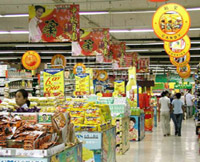Looking for more insights?
Sign up to stay informed about our latest article releases.
Wal-Mart, the largest retailer in the world, has recently made some major moves in the China market. After a decade of slow growth, Wal-Mart, which has 66 stores in the region, has set up a union, signaled its intent to buy the Taiwanese retailer Trust-Mart, and named a new CEO for its China operations. What impact will these moves have on Wal-Mart’s future in China and what are the challenges of doing business in the country’s highly competitive retail industry? Wharton professors and various experts in China offer their opinions.

Sign up to stay informed about our latest article releases.